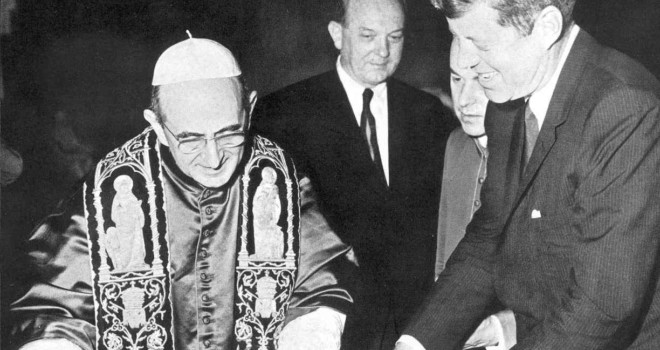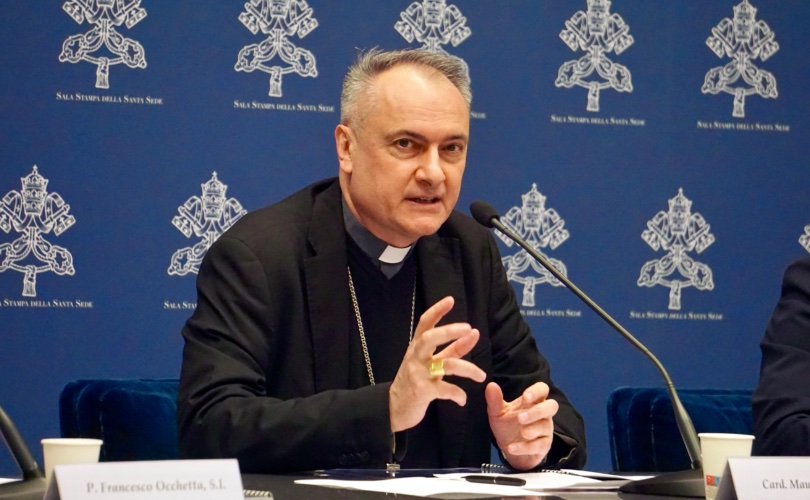By Matthew B. Rose, Catholic Exchange, July 11, 2018
This year marks the fiftieth anniversary of one of the most important papal documents in recent history, namely Bl. Pope Paul VI’s Humanae vitae. Ridiculed, belittled, and ignored upon its publication by many Catholic theologians and clerics, the encyclical has withstood the onslaughts of modernity and shaped our understanding of conjugal love, respect for life, and the responsibilities of parenthood. This series will first look at the context of the encyclical, then examine the main questions answered therein, and finally conclude by looking at the famous predictions of Paul VI.
A Moral Revolution
The Christian condemnation of contraception stretches back to the early Church Fathers, who interpreted the story of Onan (Genesis 38:8-10) as a condemnation of all contraceptive acts. Several passages in the New Testament (such as Galatians 5:20; Revelation 9:21; 21:8; and 22:15), as well as early Christian works such as the Didache (2:2) condemn pharmakeia, a Greek word which is often translated as “sorcery” but could also be rendered “drugs.” As these Christian sources often list pharmakeia in the context of sexual sins, many commentators see these passages as condemning medical contraceptives.
So consistent was the condemnation that no Christian denomination officially approved of contraception until 1930. That August at a Conference held in Lambeth, England, the bishops of the Anglican Church approved the limited use of artificial contraception “in those cases where there is such a clearly felt moral obligation to limit or avoid parenthood, and where there is a morally sound reason for avoiding complete abstinence.” Despite condemning the sale of contraceptives in other resolutions approved during that Conference (and the explicit condemnation of contraceptives at the previous Conference in 1920), this allowance paved the way for other Protestant groups to approve the use of contraception, at first by married couples but eventually to anyone engaging in sexual activity.
The Church, in her wisdom, spoke out against this moral revolution, most defiantly in Pius XI’s encyclical Casti Connubi (December 31, 1930), which reaffirmed the Church’s position in the following words:
But no reason, however grave, may be put forward by which anything intrinsically against nature may become conformable to nature and morally good. Since, therefore, the conjugal act is destined primarily by nature for the begetting of children, those who in exercising it deliberately frustrate its natural power and purpose sin against nature and commit a deed which is shameful and intrinsically vicious (54).
Pius XI merely reiterated the teaching of the Church as it had stood throughout 1900 years of her history. It was a clear statement, without ambiguity. It should have been the last word on the subject.
Unfortunately, it was not.
The Pope vs. the Papal Commission
As contraception found wider acceptance and use in society, the Church remained firm in her opposition to it. Pope Pius XII reiterated his predecessor’s teaching, condemning artificial birth control and extolling natural family planning. Paul VI himself, prior to writing Humanae vitae, emphasized the continual teaching of the Church against contraception.
The Second Vatican Council had also condemned artificial birth control in Gaudium et Spes 51; at the same time, it did not offer any “concrete solutions” to particular problems concerning modern parenthood (see 51, footnote 14). That was the purpose of the Pontifical Commission on Population, Family and Birthrate, which Pope St. John XXIII established in 1963. The Commission gathered theologians (including Karol Wojtyla, the future Pope John Paul II), cardinals, priests, and medical professionals to discuss the issues in its title; Pope Paul VI gave the Commission the additional task of examining the problem of artificial birth control. After years of discussion, the Commission put together a report that suggested the Church accept contraception for the sake of couples who struggled under the burden of parenthood, using arguments strikingly similar to those put forward at Lambeth in 1930. A report compiled by four of the dissenting Commission members urged the Pope to stand with the Church’s tradition and condemn contraception (Karol Wojtyla did not submit a vote, as the communist government in Poland prevented him from attending the sessions).
Pope Paul VI weighed the evidence, examined the arguments, and wrote his response. The result was Humanae vitae. In the encyclical, Paul VI thanked the Commission for their work and advice. However, he could not simply push forward the Commission’s majority decision as Church teaching, being as “there was not complete agreement concerning the moral norms to be proposed” and that some of the suggestions “were at variance with the moral doctrine of marriage constantly taught by the magisterium of the Church” (Humane vitae, 6).
Pope Paul VI had met the Commission’s conclusions with a conclusion of his own: he, not they, would teach the definitive doctrine of the Church on contraception. So strong was his opposition to the Commission’s conclusions that he used those conclusions as the main points of discussion in the encyclical, explaining from Scripture, Tradition, and the Natural Law why they were incorrect. It was Pope Paul contra mundum.
Dissent by the (Theological) Doctors
The reaction to the encyclical was swift, intense, and almost universally negative. The most famous reaction might be that of Fr. Charles Curran, a professor at the Catholic University of America, who, along with other notable theologians, held a press conference where he publicly assured Catholics that they did not have to obey the pope’s encyclical. Rather, it was a matter of their personal consciences whether they used contraception or not.
The dissenters held that Humanae vitae was not an example of the pope teaching infallibly, that is, free from error. They stretched their conclusion to mean that, if Humanae vitae was not infallible, then it was not necessary to follow the pope’s teaching (one sees, ironically, the same line of argument put forward by some conservatives regarding Pope Francis’ teaching on responsible care for the environment in Laudato Si). Some of the dissenters, such as William E. May, later recanted, not only agreeing with Pope Paul VI’s conclusions but also becoming vocal supporters of them.
However, the damage was already done. Humanae vitae’s implementation stalled in the West, especially in the United States. Many seminaries continued to teach the moral philosophies rejected by the encyclical; priests taught such philosophies in turn taught these errors to the faithful from the pulpit and in the confessional. In September 1968, a bishop in Canada taught the same view as Curran and his supporters, that the morality of contraception was ultimately decided by the individual’s conscience. Catholic newspapers for the most part supported the dissenters, questioning and “correcting” the pope (one notable exception in the United States was Triumph Magazine, though it was exemplary of a small minority of Catholic publishers).
Members of the Church lost their “sense of sin,” to use a phrase from Pius XII. Paul VI suffered much because of the Catholic response to Humanae vitae. He did not write another encyclical for the remaining nine years of his pontificate.
A Great Pope Responds
Then came the theological powerhouse that was Pope St. John Paul II’s papacy. A little over a decade after Humanae vitae’s promulgation, the pope began a series of reflections now collected as the Theology of the Body. In the course of these audiences, John Paul II held up Humanae vitae as the official teaching of the Church and as a new lens for examining the relationship between men and women. This was an important approach, as one major criticism of the encyclical was that it favored a traditional act-centered morality rather than a contemporary person-centered one. John Paul II was well aware of the tension between moral acts and persons (that was the theme, after all, of his second book, Person and Act), and used his Wednesday Audience reflections to show how Humanae vitae demonstrated a person-centered morality.
Pope St. John Paul II was not satisfied with merely reflecting on the encyclical in his Wednesday Audiences. Some of his major works answer objections raised against Humanae vitae. John Paul’s important moral encyclical Veritatis splendor spends a lot of time refuting the philosophical errors that underpinned Fr. Curran, et al.’s dissent, specifically consequentialism. Likewise, in Evangelium vitae, the pope defends the Church’s teaching on contraception and abortion, referencing Paul VI in the process. Finally, John Paul II makes frequent use of Humanae vitae in his Apostolic Exhortation Familiaris consortio.
With this background in mind, we can read Humanae vitae for what it is: an authentic message of hope, clear moral guidance for a world in crisis, and evidence of Christ’s promise that, “The gates of Hell will not prevail” against the Church He founded on the rock of the papacy.
© Copyright 2018 Catholic Exchange. All rights reserved.Catholic Exchange is a project of Sophia Institute Press.Design by Perceptions Studio







